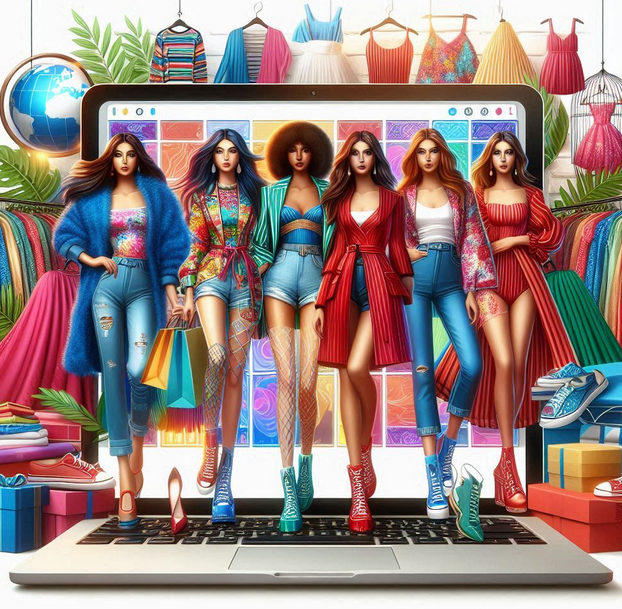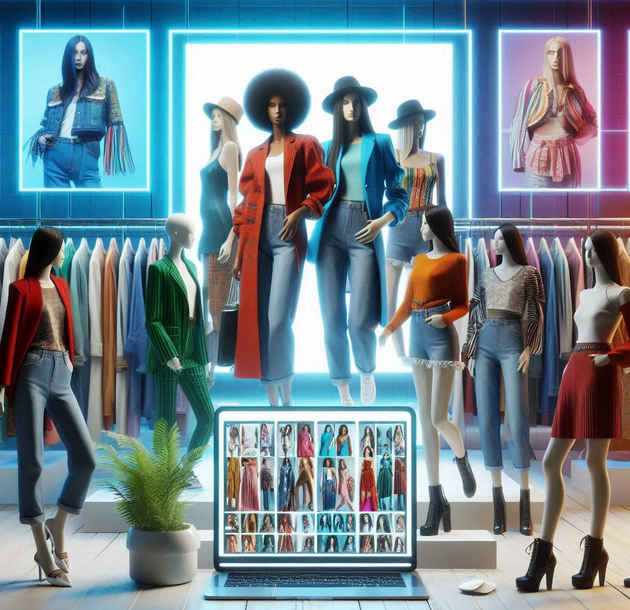
In the intricate tapestry of fashion, the history of designer brands weaves a captivating narrative of innovation, culture, and artistry. These brands are more than mere labels; they are the embodiment of visionaries who transformed fabrics and threads into symbols of status, identity, and aspiration. Understanding the origins and evolution of iconic designer brands not only enriches appreciation for their craftsmanship but also unravels the social, political, and economic currents that shaped the fashion landscape we know today.
The Genesis of Designer Brands: From Tailors to Titans
The story begins in the ateliers of Europe, where bespoke tailoring was a revered craft practiced by master tailors and couturiers. Before the rise of what we now recognize as “designer brands,” clothing was custom-made, painstakingly tailored to fit the individual’s form and taste.
The transition from individualized tailoring to branded designer collections was gradual but pivotal. It heralded a new era where creativity, innovation, and mass appeal converged. The term “designer brand” itself emerged in the mid-20th century, marking the moment when fashion shifted from mere necessity to cultural phenomenon.
Coco Chanel: The Architect of Modern Elegance
Few names resonate in the history of designer brands as profoundly as Coco Chanel. Born Gabrielle Chanel in 1883, she redefined women’s fashion by rejecting the rigid, elaborate garments of the early 1900s. Chanel introduced simplicity and comfort without sacrificing sophistication — a radical departure at the time.
Her iconic little black dress, tweed suits, and the timeless Chanel No. 5 perfume transcended fashion to become cultural artifacts. Chanel’s vision was revolutionary: fashion that empowered women with both elegance and ease. Her brand set the template for future designer houses, intertwining style with a distinct personality.
Christian Dior: The Birth of the New Look
In 1947, Christian Dior revolutionized post-war fashion with the debut of the “New Look,” a silhouette featuring rounded shoulders, a cinched waist, and a voluminous skirt. This design signaled a return to opulence and femininity after years of wartime austerity.
Dior’s influence is a landmark chapter in the history of designer brands, showcasing how fashion can serve as a reflection of societal moods. His creations not only revived the French fashion industry but also elevated it to unparalleled international prestige. The House of Dior remains a beacon of haute couture and innovation.
Gucci: From Leather Goods to Global Luxury Empire
The origins of Gucci trace back to 1921 Florence, where Guccio Gucci began crafting exquisite leather goods inspired by aristocratic equestrian culture. What started as a small luggage and saddle shop burgeoned into one of the world’s most recognizable luxury brands.
Gucci’s trajectory highlights a key evolution in the history of designer brands — the diversification of offerings beyond clothing to encompass accessories, fragrances, and lifestyle products. The brand’s distinctive logo and bold designs became synonymous with Italian luxury and craftsmanship, cementing its global dominance.
The Emergence of American Designer Brands
While European houses dominated early fashion history, American designer brands emerged with their own unique voice in the mid-20th century. Designers like Ralph Lauren, Calvin Klein, and Donna Karan introduced styles that mirrored American culture’s pragmatic, casual, yet aspirational ethos.
Ralph Lauren’s preppy Americana and Calvin Klein’s minimalist sensibility revolutionized how designer fashion was perceived and consumed. These brands bridged luxury with everyday wear, creating a democratized model of designer appeal that continues to influence the industry.
The Digital Revolution and Designer Brands in the 21st Century
The history of designer brands took an extraordinary turn with the advent of digital technology and social media in the 2000s. The fashion industry transformed overnight. Designers no longer dictated trends solely from runway shows; consumers could engage directly, influencing styles in real-time.
Brands like Balenciaga, Off-White, and Vetements harnessed this shift to disrupt traditional fashion hierarchies, blending streetwear with luxury in unprecedented ways. Digital platforms became vital for marketing, storytelling, and cultivating a global fanbase, democratizing access to designer fashion like never before.
Sustainability and Ethical Evolution in Designer Brands
A crucial contemporary chapter in the history of designer brands is the rising commitment to sustainability and ethical production. As awareness of environmental and social impacts grows, many iconic brands have embraced eco-friendly materials, transparent supply chains, and circular fashion practices.
This evolution is not merely a trend but a profound reimagining of luxury. It challenges the industry to innovate while respecting the planet and people, thereby ensuring that the legacy of designer brands remains relevant and responsible for future generations.
The Role of Iconography and Branding
One cannot explore the history of designer brands without acknowledging the power of logos and brand identities. The interlocking double C of Chanel, Gucci’s horsebit, and Louis Vuitton’s monogram have become cultural symbols, instantly recognizable across the globe.
These emblems serve more than aesthetic purposes; they convey heritage, trust, and exclusivity. The art of branding has evolved hand in hand with design, forging emotional connections that transcend mere commerce.
Pioneering Designers Who Shaped the Industry
Several visionaries punctuate the annals of the history of designer brands with their groundbreaking contributions:
-
Yves Saint Laurent: Celebrated for democratizing fashion with ready-to-wear lines and introducing androgyny with tuxedo jackets for women.
-
Alexander McQueen: Known for theatrical runway shows and pushing boundaries of design and craftsmanship.
-
Karl Lagerfeld: The creative force behind Chanel and Fendi, reinventing classic brands for modern audiences.
-
Vivienne Westwood: Merging punk rebellion with high fashion, Westwood challenged norms and inspired generations.
Their stories exemplify how designer brands are not static entities but living legacies propelled by creativity and boldness.
The Influence of Designer Brands on Popular Culture
Designer brands have permeated popular culture beyond fashion. Celebrities, films, and music often spotlight these labels, embedding them in collective consciousness. Red carpet appearances, music videos, and social media endorsements amplify their allure and cultural significance.
This synergy fuels demand and elevates brands to aspirational status. Understanding this dynamic is essential in grasping the full scope of the history of designer brands.
Challenges and Transformations Ahead
As the fashion world continues to evolve, designer brands face multifaceted challenges: changing consumer expectations, the need for inclusivity, and rapid technological advancements. Artificial intelligence, virtual fashion shows, and metaverse storefronts hint at a future where the traditional notions of fashion may be redefined yet again.
Navigating these shifts while preserving heritage and innovation will be critical for designer brands aiming to maintain their iconic status.
The history of designer brands is a rich chronicle of artistic vision, cultural dialogue, and commercial prowess. From the ateliers of early couturiers to the digital runways of today, these brands have continually shaped and mirrored society’s evolving tastes and values.
Each stitch, silhouette, and logo carries stories of triumph, transformation, and timeless style. Immersing oneself in this history reveals why designer brands remain far more than fashion labels—they are enduring icons of human creativity and aspiration.







